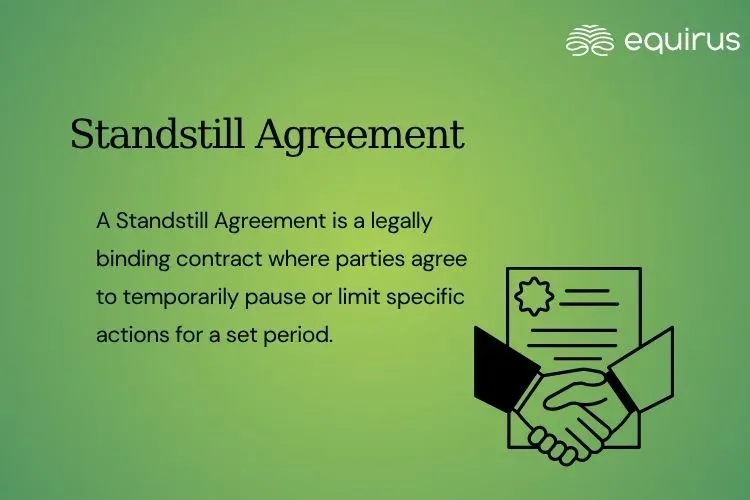Standstill Agreement

Key Highlights
-
A Standstill agreement is a legally binding contract where parties agree to temporarily pause or limit specific actions for a set period.
-
Types includes mergers & acquisitions, litigation standstill, financial standstilland shareholder standstill.
What is Standstill Agreement?
A Standstill Agreement is a legally binding contract where parties agree to temporarily pause or limit specific actions for a set period. It acts as a "timeout," enabling negotiation, dispute resolution, or strategic planning without immediate pressure from hostile actions or legal proceedings.
Key Features
-
Purpose: Halts actions like hostile takeovers, share purchases, litigation, or debt enforcement to foster stability and dialogue.
-
Duration: Clearly defined start and end dates or conditions for termination.
-
Parties Involved: Involves two or more consenting parties.
-
Legal Clauses: Outlines restricted actions, terms, and consequences for breaches.
Types of Standstill Agreements
-
Mergers & Acquisitions: Prevents hostile takeover attempts by limiting stock purchases or bids during negotiations.
-
Litigation Standstill: Pauses legal actions to allow settlement discussions, avoiding costly litigation.
-
Financial Standstill: Creditors suspend debt enforcement to facilitate debt restructuring for financially distressed companies.
-
Shareholder Standstill: Restricts shareholders from selling shares or influencing decisions during sensitive periods.
Benefits of Standstill Agreement
-
Negotiation Support: Creates a safe space for parties to explore solutions without aggressive moves.
-
Strategic Flexibility: Allows companies to reassess strategies or restructure without immediate threats.
-
Dispute Resolution: Facilitates settlements or mediations by pausing disputes.
-
Protection: Shields companies from hostile takeovers or shareholder disruptions during vulnerable times.
